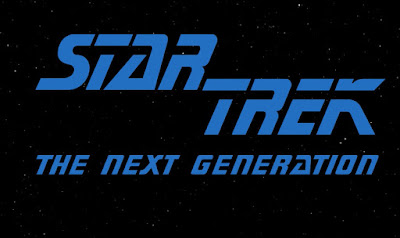In
“To the Gods Alone,” Ben Richards (Christopher George) is trapped in a wintry
log cabin with his pursuer, Fletcher (Don Knight), about to be delivered to
Maitland.
In
close proximity to each other for a sustained period -- for the very first time
-- Richards shares the story of Jordan Braddock’s (Barry Sullivan) last days.
Early
in his “run,” Richards had been captured, and then found himself forced to help
the aging millionaire, and CEO of Braddock Industries. Dying of old age, and fearing senility and
dementia, Braddock begged for help, seeking to know Richards’ price for helping
him.
Then
-- as now – Richards proved that he had no price. He couldn’t be bough. But
what he did have was a sense of decency. After first leaving Braddock in the
custody of two dangerous rednecks, he returned to save his tormentor, and even
went so far as to give Braddock the blood transfusion he so desperately needed.
In
the end, however, Braddock did not survive, and Fletcher was forced to find a
new employer in Maitland.
One
of the things I cherish most about The Immortal (1969-1971), is its
occasional ability -- despite a rusty and
repetitive premise -- to totally surprise (and thus impress…) the
audience.
This
episode, “To the Gods Alone” was veritably thrown away by the network with an
airing on New Year’s Eve of 1970, when no one would have been watching TV. And yet it is, in so many ways, “To the Gods
Alone” is one of the best episodes of the series.
“To
the Gods Alone” has one foot in TV’s past, and one in its future. In terms of
the past, the episode is nearly a “my enemy/my ally” tale, with Fletcher and
Richards trapped together in a snow-bound cabin. Similarly, the story proceeds
via flashback, a tried-and-true TV technique.
But
in terms of the future, the episode remembers that this series has a history,
and a continuity. Specifically, Braddock is the man who hunted Richards in the
original, highly-rated pilot movie. In the series, he is replaced with (the
less-interesting) Maitland. All we really need to know to understand the series
is that Braddock is dead, and Maitland is his replacement.
But
“To the Gods Alone” goes further than that, and explains what happened to
Braddock, in his final days. Most of the episode is spent with Braddock and
Richards together in a rural area, attempting to survive, and see which of them
can gain the upper hand. Their dynamic is best dramatized in the back-and-forth
dialogue between the two stubborn men. Braddock states “I want to live.”
Richards replies “I want to be free.”
Between those two extremes, the audience
wonders if compromise is possible, beneficial, or necessary.
Ultimately,
the episode humanizes Braddock. He is a selfish, greedy man who wants more
life, and our first instinct might be to conclude that he has done nothing to
make us feel he deserves to go on living.
This episode, however, makes us feel sympathy for the man. When sick and
dying, Braddock calls out for Miriam, his dead sister, and the only person who
genuinely loved him, or cared for him.
Braddock possesses all the material riches of the world, but none of the
emotional ones. Perhaps he wants more
life because, as he suggests, there is some part of his life that is still
empty. He has lived so many years, and accumulated so many things, and still his
time on this mortal coil feels incomplete to him.
It’s
fascinating too, the way that Braddock talks about selfishness in this
episode. “There’s nothing wrong with selfishness,” he tells Richards. Rather,
he claims, it is the very thing that drives men towards “achievement.” In this
episode, we are able to see that the viewpoints of both men -- Braddock and
Richards – come from a place of selfishness.
Braddock
wants more life, at all costs. Richards wants to be free at all costs, even
when his blood could save people.
Neither
man is a saint.
Perhaps
that is why, in the final scenes, Richards relents and agrees to a transfusion
for Braddock. He has started to
understand where his need for freedom ends and his selfishness begins. “Compassion
is an insidious thing,” Braddock says, and yet Richards proves here his
compassion, even for his enemy, on two occasions. First, he saves Braddock from the rednecks,
secondly, he attempts to transfuse him (before tragedy strikes).
The
truly great thing about this episode is that when it ends, we have a better and
deeper understanding of these two important characters, both Braddock and
Richards. Richards realizes that he can’t hold onto hate and selfishness. And
Braddock realizes how much he has missed in life, and yet must face his
greatest fear: death.
Fletcher gets a meatier part here than usual,
but doesn’t reveal any great depths, alas. He’s a gun for hire, a man hired to
do a job, and that’s about it. His commitment is to the man (or woman) paying
him at the moment. For Fletcher,
selfishness has eclipsed compassion totally in his psychological gestalt.
“To
the Gods Alone” is a story that The Immortal might not have told --
and strictly speaking, probably didn’t need to tell -- but I’m glad it did. It
fills in an important gap in Richards’ narrative and history, and brings
closure to one of the most memorable and important characters featured in the
property.
And
on top of these virtues, the great Bruce Dern guests here as a surly,
avaricious redneck. What more could anyone want?
Next
up: “Sanctuary.”























































